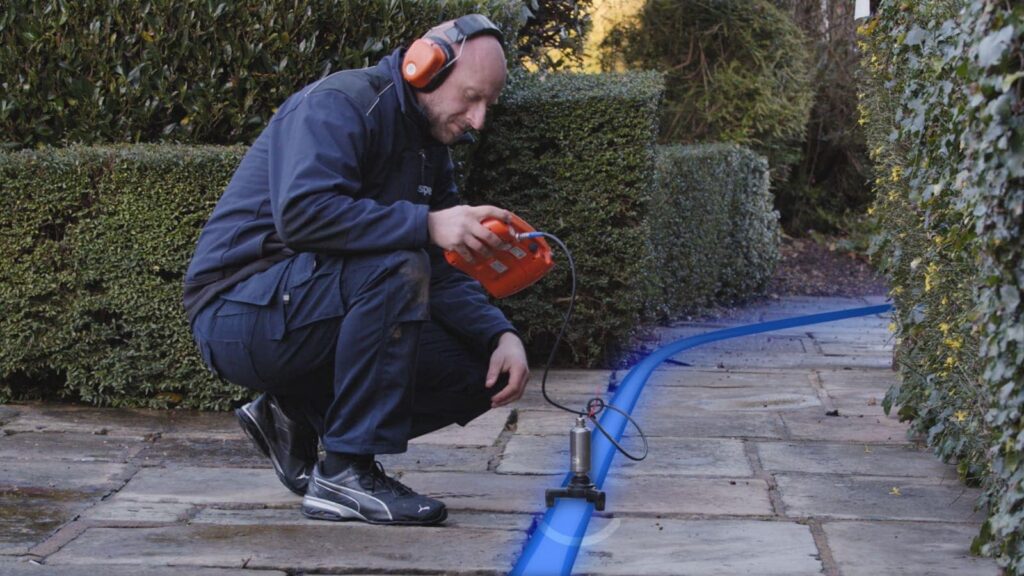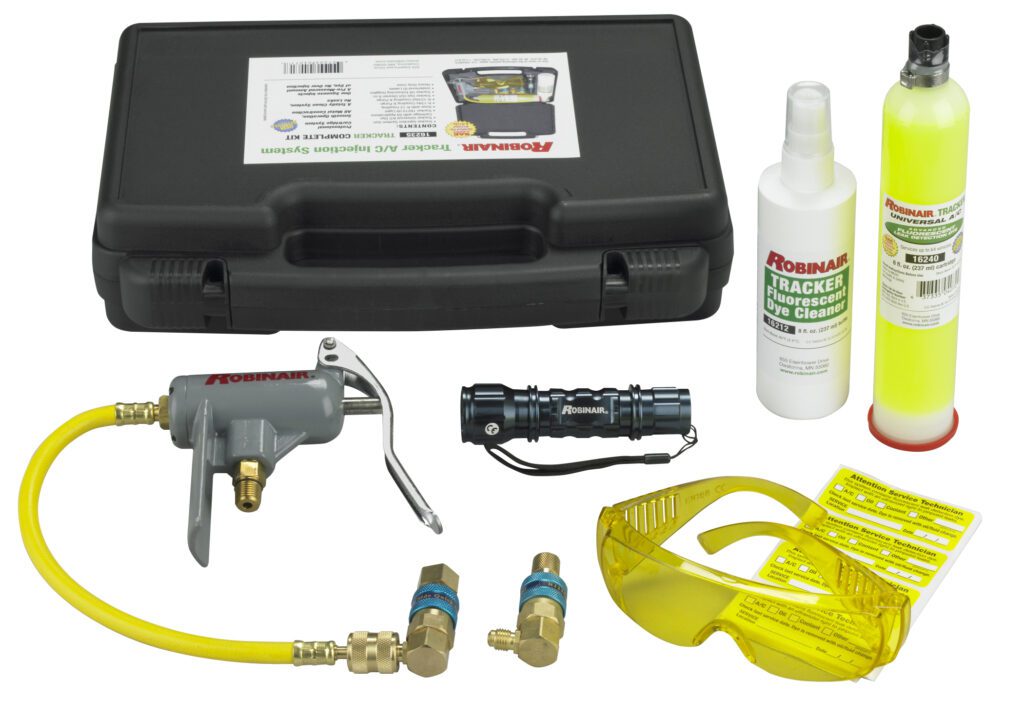Introduction:

Welcome, dear reader! If you’re here, it’s likely you’re facing the age-old challenge of detecting an underground leak in your sprinkler system. Fear not, for you’ve come to the right place. In this guide, crafted with the expertise of seasoned plumbers, we’ll walk you through the steps to identify and address these pesky issues. So, let’s dive in!
Importance and Convenience of Sprinkler Systems:

Sprinkler systems have become an integral part of modern landscape design. They offer convenience, ensuring that your garden remains lush and vibrant without the manual labor of watering. Moreover, a well-maintained sprinkler system can enhance the health and beauty of your landscape. However, like all things, they aren’t immune to wear and tear.
Potential Challenges and Consequences of Leaks:
An underground leak, if left unchecked, can lead to numerous challenges. Increased water bills, landscape damage, and even structural damage to your property are just a few. The key is early detection and timely irrigation repair to prevent these potential pitfalls.
Detecting Leaks:
Detecting an underground leak might seem like finding a needle in a haystack, but with the right techniques and a bit of patience, it’s entirely doable.

Monitoring Water Usage:
One of the first signs of a leak in your irrigation system is a sudden spike in your water bill.
Regularly Check Water Bills for Unexpected Increases:
Always keep an eye on your monthly water bill. A sudden, unexplained increase might be your first clue to an underground leak. Remember, your sprinkler system should maintain a consistent watering cycle, so any drastic changes in water usage warrant investigation.
Use Water Meters to Detect Potential Leaks:
Water meters are invaluable tools in leak detection. By monitoring the water flow and pressure, you can pinpoint areas of concern within your sprinkler layout.
Visual Inspections:
Sometimes, the signs are right before our eyes, if only we take the time to look.
Check for Visible Signs of Leaks, Such as Puddles, Wet Spots, or Damp Areas:
A broken spray head or a leak in the PVC pipes can lead to visible wet spots or puddles. If you notice any such anomalies, especially outside of regular watering cycles, it’s time for a closer inspection.
Observe the Landscape for Any Colored Patches or Staining:
Landscape damage, such as discolored patches of grass or staining on pathways, can be indicative of an underground leak. Such signs often point to issues with sprinkler system components or even broken sprinkler heads.
Equipment and Tools:
Ah, the tools of the trade! Just as a painter needs their brushes, you’ll need the right equipment to detect those elusive underground leaks in your sprinkler system. Let’s dive into the world of tools and techniques that make this task a breeze.
Use Sound-based Equipment, Dye Testing, and Leak Detection Tools:

Electro-acoustic testing is your best friend here. This method uses sound waves to detect where the leak is coming from. Devices like the water-leak microphone and acoustic testing kit amplify the sound of water escaping, leading you right to the source.
Another handy tool is dye testing. By introducing a colored dye into the irrigation line and observing where it emerges, you can pinpoint the exact location of the leak.
Lastly, don’t forget about specialized leak detection tools. Devices like the leak-noise logger can be invaluable in your quest.
Consider Professional Leak Detection Services for Complex Systems:
Sometimes, the DIY approach might not cut it, especially for intricate sprinkler layouts. In such cases, consider reaching out to a sprinkler maintenance company or an irrigation company with expertise in underground leak detection. They’ll have the advanced tools and knowledge to handle even the most complex systems.
Signs and Indications:
You don’t always need fancy equipment to tell you there’s a problem. Sometimes, Mother Nature gives you a nudge in the right direction. Here are some telltale signs that your sprinkler system might be leaking.
Overgrown or Extremely Green Areas:
If you notice a patch of your lawn looking exceptionally lush compared to its surroundings, it might be getting extra water from a leak. This landscape damage can be both a curse and a blessing, as it points you directly to the problem area.
Over-saturated Spots Around Sprinklers:
Wet valve boxes or overly damp areas around sprinkler heads can be a dead giveaway. If you see pools of water or muddy spots, especially outside of regular watering cycles, it’s time to investigate.
Pools of Water or Muddy Areas:
A broken spray head or a compromised PVC pipe can lead to visible pools of water. These areas can become breeding grounds for pests, so it’s essential to address the issue promptly.
Repairing Leaks:
Alright, now that you’ve identified the leaks, it’s time to roll up those sleeves and get to work. Repairing leaks, whether underground or above ground, requires precision, patience, and the right tools. Let’s dive into the nitty-gritty of fixing those pesky leaks.
Addressing Underground Leaks:
Underground leaks can be a bit tricky, but with the right approach, you can have your sprinkler system up and running in no time.
Dig Carefully to the Broken Line and Replace Damaged Sections:
First things first, you’ll need to locate the exact spot of the leak. Once you’ve pinpointed the location using your leak detection tools, start digging carefully. Remember, your sprinkler layout might have multiple lines, so ensure you’re working on the right one. Once you’ve exposed the damaged section, cut out the broken part and replace it with a new piece of PVC pipe. Make sure to secure it properly with connectors and adhesive.
Ensure Proper Connections and Allow Time for Installations to Set:
After replacing the damaged section, it’s crucial to ensure all connections are tight and secure. This will prevent any future leaks. Once everything is in place, give the adhesive enough time to set before you turn on the water supply. Patience is key here!
Addressing Above Ground Leaks:
Above ground leaks, while easier to spot, can be just as troublesome if not addressed promptly.
Identify and Replace Broken or Malfunctioning Parts:

Inspect your sprinkler heads and valve boxes. If you find any broken spray heads or malfunctioning parts, replace them immediately. Always keep a few spare parts on hand; this will save you a trip to the irrigation repair store.
Adjust the Direction and Tilt of Sprinkler Heads as Needed:
Sometimes, the problem isn’t a leak but rather a misdirected sprinkler head. Ensure all sprinkler heads are tilted correctly and directing water to the intended areas. Adjusting the direction can prevent over-saturation in certain spots and ensure even watering cycles.
Conclusion:
As we wrap up this comprehensive guide, it’s essential to reflect on the journey of understanding, detecting, and repairing leaks in your sprinkler system. Let’s revisit some of the key takeaways.
The Significance of Timely Leak Detection and Repair:
An underground leak, if left unchecked, can lead to a myriad of problems. From skyrocketing water bills to landscape damage, the consequences can be dire. Timely leak detection, using tools like the water-leak microphone or electro-acoustic testing, can save you a lot of hassle and money in the long run.
The Value of Regular Maintenance and Professional Consultations:
Your sprinkler system, like any other piece of equipment, requires regular maintenance. Scheduling periodic irrigation inspections can help identify potential issues before they escalate. And remember, there’s no shame in seeking out a sprinkler maintenance company or an irrigation company for expert advice and services.
Recommendations for Ensuring a Functional and Efficient Sprinkler System:
- Regular Checks: Always keep an eye on your sprinkler system components, especially after significant weather events.
- Stay Updated: Embrace sprinkler system advancements and innovations. Upgrading your system can enhance its efficiency and lifespan.
- Seek Expertise: Don’t hesitate to consult with sprinkler system professionals for recommendations, especially when planning major changes or installations.
FAQ:
What are the signs of a broken sprinkler pipe underground?
Signs include unusually lush patches of grass, over-saturated spots around sprinklers, pools of water, and an unexpected increase in your water bill.
How deep are sprinkler pipes usually buried?
Sprinkler pipes are typically buried between 6 to 12 inches deep, depending on the sprinkler system design and local regulations. However, the sprinkler system depth can vary based on factors like soil type and landscape design.
Can a leaky sprinkler system damage my home’s foundation?
Yes, a leaky sprinkler system can lead to soil wetness around your home’s foundation. Over time, this can cause the soil to expand and contract, potentially leading to foundation cracks or shifts. It’s crucial to address any leaks promptly to prevent such damage.

